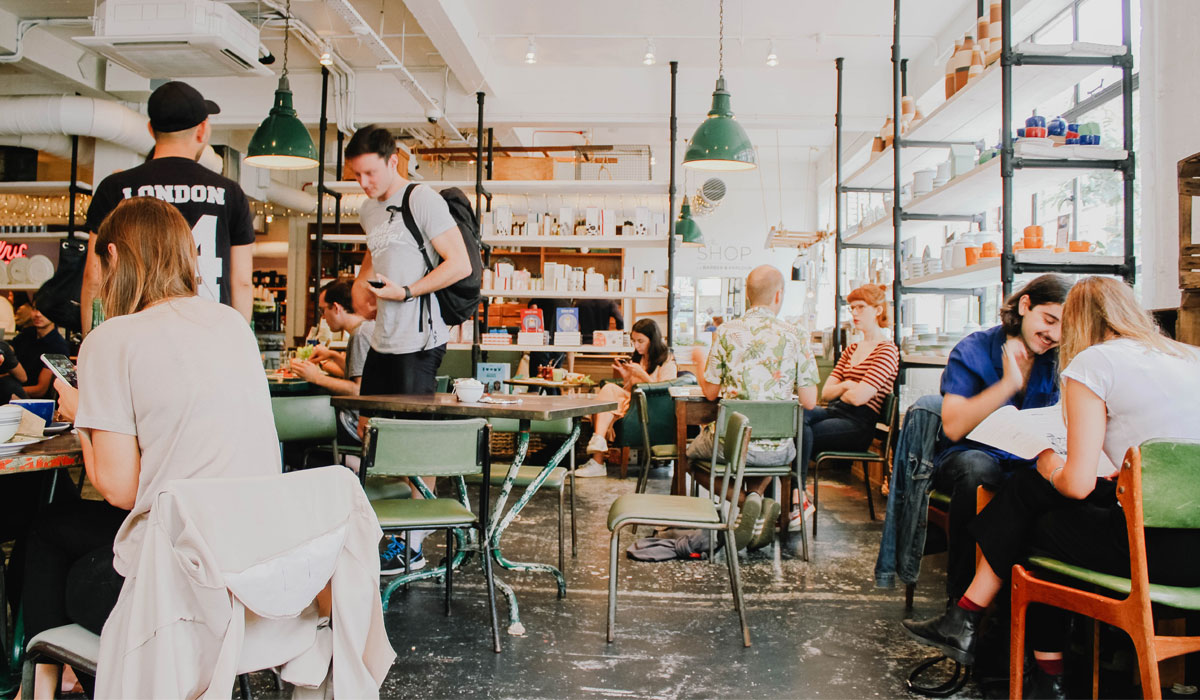The COVID-19 pandemic has fueled a surge in takeout and food delivery options across the restaurant industry, underscoring the tremendous value of these offerings. However, when the time comes to reopen dining rooms and emerge from our homes, it’s expected consumers will seek out safe, trustworthy experiences and opportunities to reconnect with the places and people they have missed.
Before stay-at-home orders issued throughout the country, we conducted a nationwide survey of more than 1,000 U.S. consumers to assess their preferences around restaurant dining options. It found that two in three Americans preferred dining in restaurants (62 percent) over takeout or delivery (34 percent). However, the situation quickly changed as restaurants closed their dining rooms, and delivery and take-out have become a staple for consumers looking to support local businesses, while clinging to a sense of normalcy and comfort through food from their favorite restaurants.
A New Day for Quick-Service Restaurants
When we emerge from this unprecedented time, it’s expected that consumers will once again seek out the in-person experiences they once cherished. However, to take advantage of this innate desire to reconnect with the world, it will be incredibly important for restaurants to re-establish trust with consumers still leery of spreading the virus.
It won’t be enough to put out a message saying, “It’s fine to come back now.” It may not even be enough to simply follow local government-imposed guidelines. Instead, put added precautions in place to prevent future spread of the virus to show employees and consumers that you planned for and prioritized their well-being, even while closed. This includes the important steps necessary to ensure a clean and sanitized environment.
Whether your location was exposed to the virus or not, here are ways to provide extra assurances that you implemented unprecedented processes to sanitize the premises:
Clean rigorously and daily. Non-toxic, non-corrosive and FDA/EPA-approved virus-killing sanitizers should be applied to all high-touch areas and surfaces.
Sanitize the restaurant. Start at the back of the house, and move to the front of the house. In other words, begin at the kitchen and move to the dining area, front entrance, then outside the building. Focus on high-touch, high-demand areas like door handles and credit card readers.
Prepare to adjust seating and queuing areas. Ongoing precautions and social distancing guidelines may require more separation between guests, in both the dining and ordering/pick up areas—not to mention it may make customers feel more comfortable. Plan accordingly to ensure increased spacing between diners.
Prioritize employee hygiene. Make sure employees understand the role they can play in helping to stop future spread of the virus by practicing more stringent hygiene. Regular handwashing and use of hand sanitizer or gloves should continue to be used in the workplace.
Check equipment. Restart equipment that has been left idle during the shutdown, and prepare teams and crews to do thorough equipment checks. Plan for unexpected repairs and maintenance before re-opening.
Every detail matters. Those who put forethought into the details are likely to see improved guest results. For example, consider whether restroom hand dryers will be acceptable in a post COVID world, or will guests expect paper towel dispensers? Will customers demand contactless payment options? How will you ensure soda fountains are sanitized? Will diners still be allowed to select their own utensils? And will you need to install sneeze guards at order and pay stations? The list goes on!
Once you’ve addressed each of these areas, communicate with confidence that the facility is continuously disinfected from top to bottom and that you’ve considered all elements of the restaurant to ensure that employees and consumers are ready to navigate through this next phase of reconnecting.
The Experience is What Brings Us Back
The findings from the survey we conducted before the pandemic—which were surprisingly consistent across all demographic groups—suggested that people prefer their meals to be memorable events. This likely will not change, but memorable moments now go beyond what the food tastes like.
At the end of the day, the experience will still remain the defining factor for consumers. While the thresholds may have shifted slightly, the building blocks for great experiences will continue to be food quality, consistency, atmosphere (which includes cleanliness), convenience and waitstaff.
Vixxo found that prior to the pandemic, while roughly half (51 percent) of consumers selected their favorite restaurant based on the menu options, 38 percent said that it’s the overall experience at an establishment—including atmosphere, employees and convenience—that makes it their favorite.
As restrictions begin to lift, consumers will return to restaurants that they believe will provide them with best value and experience. But seemingly minor problems can derail that trust. For example, if the sign outside the building won’t stay lit, if a “broken” sign is taped to the door, if floors seem dirty and worn—a guest will notice and downgrade their impression of a restaurant. By focusing on the basics, like clean and well-maintained facilities, quality food, and providing good value to customers, quick-serves can create new opportunities for their businesses.
That’s why it’s critical that operators double down to ensure that everything that affects the facility—from cleanliness to properly functioning equipment and lighting—contributes to better dining experience. These factors, combined with a restaurant’s response to the pandemic and the trust it builds with employees and customers, will play an important role in its future success.
Matt Brown is Chief Revenue Officer at Vixxo, a leading facilities management partner for many Fortune 500 clients in restaurant, retail, convenience, and supermarket industries.














